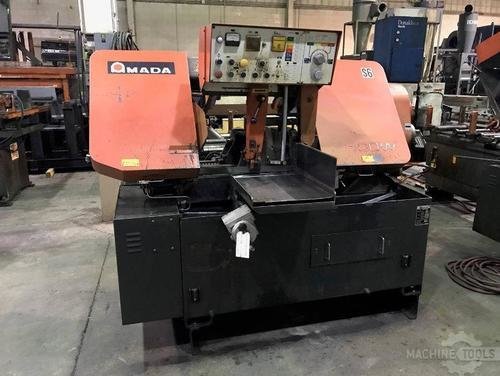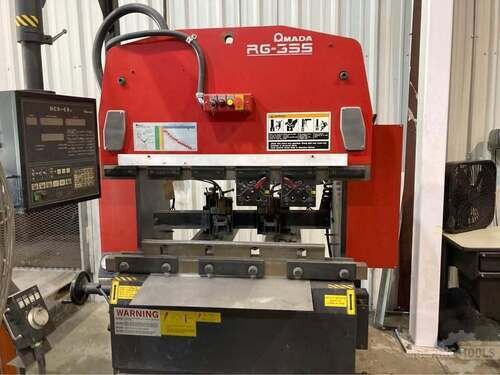As President of Mac-Tech, I work directly with large fabricators to plan press brake investments that strengthen margins and protect capacity. My role is to translate strategy into equipment, process, and financial decisions you can defend to ownership and your finance team. With Ermaksan press brake platforms tailored to your workflow and the tax leverage of Section 179, we can turn an upgrade into a measurable step-change in throughput, quality, and resilience.
Section 179 as a Catalyst: Turn Tax Deductions into Ermaksan Press Brake Capacity
Section 179 turns a year-end purchase into a strategic capacity move by allowing qualifying equipment to be expensed in the year it is placed in service. When we align the configuration of your Ermaksan press brake with Section 179 timing, you accelerate depreciation and bring the tax benefit forward to offset cash outlay and reduce total project cost. That makes it easier to approve the exact options your work demands rather than compromising on capability.
In practice, we map your backlog and product mix to the right tonnage, bed length, and control package, then bundle essentials like hydraulic clamping, multi-axis backgauge, and offline programming into one qualifying acquisition. Many supporting items qualify as well, including safety systems and tooling, if purchased as part of the system. I always recommend clients confirm eligibility with their tax advisor and plan install dates so the machine is placed in service before year end.
For multi-plant operators, Section 179 can be paired with bonus depreciation and spread across a planned series of cell upgrades. We routinely structure staggered deliveries and phased commissioning so you capture tax savings without disrupting throughput. The result is a disciplined roadmap that grows bending capacity in step with bookings.
Operational Performance Gains: Rapid Setup, Laser Angle Control, Adaptive Crowning, and Robotic Cell Uptime
Ermaksan press brakes are built for fast changeovers with CNC controls like Delem DA series, hydraulic or pneumatic tool clamping, and multi-axis backgauging. Quick-release clamping and standardized tooling packages cut setup time, reduce work-in-process, and free skilled operators to manage more jobs per shift. We preload tool libraries and proven bend data so your team starts with validated parameters instead of trial and error.
Laser angle control options measure and correct bend angles in real time. This reduces first-part development, holds angles across material variability, and prevents rework on tight-tolerance parts. Adaptive crowning compensates for bed and ram deflection based on load and material thickness, which keeps angles consistent from end to end on long flanges and high-strength steels.
For robotic press brake cells, uptime is everything. We engineer the cell with the right gripper strategy, part orientation logic, and safe communications between the robot and the press brake. That includes offline simulation of reach and interference, smart part presentation, and service plans that keep the cell running. With the right fixturing and sequencing, we routinely move complex family-of-parts work from manual forming into fully automated bending.
ROI You Can Defend: Cycle-Time Analytics, Labor Redeployment, Scrap Reduction, and Energy-Smart Hydraulics
We baseline your current bend steps, tool changes, handling time, and first-article iteration. Then we model the new cycle time using Ermaksan controls, laser angle control, and adaptive crowning. The delta becomes real capacity you can sell, not just a spec sheet number. In most shops, rapid setup and first-part right combine to create double-digit productivity gains without adding headcount.
Redeploying skilled operators from repetitive jobs to higher-value work is a clear labor ROI. Automated angle control and backgauge accuracy cut scrap and rework, which shows up immediately in material yield and schedule reliability. Fewer remakes and fewer hot lists help you hit delivery dates in volatile demand cycles.
Ermaksan offers energy-smart hydraulic designs that reduce pump load during idle states and ramp only when bending. Lower energy consumption per part and less heat in the hydraulic system both contribute to lower operating cost and longer component life. We include utility and maintenance savings in the model so your business case reflects total delivered value, not just purchase price.
ERMAKSAN POWER-BEND FALCON BENDING MACHING
CapEx to Cash Flow: Financing Options, Payback Windows, and Total Cost of Ownership Modeling
We help you pick a financing structure that matches your cash flow. Options include $1 buyout leases, FMV leases, and conventional loans, often with deferred payments to align with commissioning and ramp-up. Section 179 can be used on financed equipment if it is placed in service in the tax year, which strengthens the cash position in the first twelve months.
Our payback models track cycle-time improvements, the value of capacity created, scrap reduction, reduced setups, labor redeployment, and energy savings. Typical payback windows for Ermaksan press brake upgrades run from 12 to 36 months depending on mix and automation level. We pressure test assumptions with your actual parts, shift patterns, and utilization so finance has a clear sensitivity view.
Total cost of ownership matters. We include service plans, spare parts strategy, operator and programmer training, and software licenses for offline programming. The goal is predictable cost per part and predictable uptime, with no surprises in year two or three.
Connected Fabrication: Offline Programming, Smart Tooling Libraries, and ERP to Cell Data Integration
Offline programming with Delem Profile-T or comparable software lets your programmers import CAD, simulate bend sequences, check collisions, and push validated programs to the machine. This removes programming from the press brake, shortens changeovers, and standardizes bend methods across shifts and facilities.
We build smart tooling libraries that reflect your actual inventory and preferred vendors, along with bend allowances tied to material and thickness. Operators get consistent setups and fewer manual edits. With robotic cells, we extend the digital thread to include gripper selection, stack plans, and inspection points.
For data integration, we connect schedules and part routings from your ERP or MES to the press brake cell. Work orders carry material, revision, and bend program IDs so the cell runs the right recipe every time. Production data can flow back for runtime, part counts, and exception reporting, which closes the loop on OEE and quality.
The Mac-Tech Advantage: Application Engineering, Training, and Lifecycle Service that Scale Competitive Growth
My team and I start with an on-site application study. We document your top parts, bottlenecks, and future mix. From there we configure the right Ermaksan platform, tooling strategy, and automation level, and we validate with test bends when needed. You get a clear scope, timeline, and ROI narrative that aligns operations and finance.
We deliver structured training for operators, programmers, and maintenance. That includes bend theory, control best practices, and changeover standards. For automated cells we include robot path adjustments, gripper maintenance, and troubleshooting. The goal is confidence on day one and sustained performance in month twelve.
Lifecycle support is where Mac-Tech earns long-term trust. We provide preventive maintenance, remote support, rapid parts fulfillment, and performance audits to keep cycle times tight and quality steady. As your mix evolves, we help you add axes, update software, and adjust tooling libraries so the system grows with your business.
FAQ
How are fabricators using Section 179 for press brakes right now?
- Most are bundling the press brake, safety, tooling, and software into a placed-in-service package to bring the deduction into the current tax year. Always confirm eligibility and timing with your tax advisor.
What Ermaksan features drive the fastest payback in high-mix production?
- Rapid tool clamping, multi-axis backgauges, offline programming, laser angle control, and adaptive crowning typically deliver the biggest gains by cutting setup time and reducing first-article iteration.
Can I finance and still use Section 179?
- Yes, many clients finance while taking Section 179 in the year the machine is placed in service. Your lender and tax advisor can align the structure with your cash flow and tax plan.
How do you model ROI for automation versus manual bending?
- We simulate cycle time, setups, handling, first-part validation, and scrap risk. We then compare labor content and throughput to calculate payback and sensitivity to volume and mix changes.
What does integration to ERP involve?
- We map part numbers and revisions to programs, set up data exchange for schedules and completions, and standardize program naming so the cell runs the correct recipe while reporting back part counts and runtime.
Do Ermaksan press brakes support offline programming and tool libraries out of the box?
- Yes, with the appropriate control package and software licenses, you can use offline programming and maintain robust tool and material libraries that sync to the machine.
- How do you protect uptime on robotic press brake cells?
- We engineer grippers and part presentation, provide preventive maintenance schedules, and instrument the cell for quick diagnostics, which keeps availability high and recovery time short.
You can reach me directly at joe@mac-tech.com or 414-477-8772 to discuss your application, budget, and timelines. Together we will design an Ermaksan press brake solution that fits your workflow, leverages Section 179, and delivers measurable ROI.
Get Weekly Mac-Tech News & Updates








